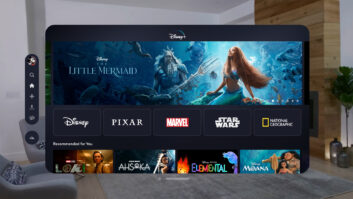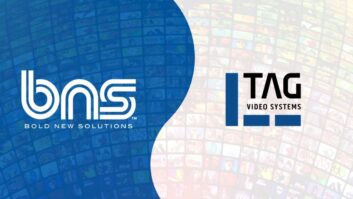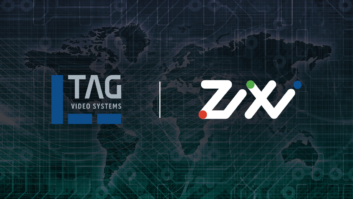
Today, there is much debate about High Dynamic Range (HDR) as a means to improve video image quality in Ultra HD.
The challenge is evident in colour space diagrams. ITU Rec 709 defined the high definition (HD) colour space in 1990, and was limited by the CRT display technology of the time, including eight-bit colour.
ITU Rec 2020, published in 2012, defines a much wider colour gamut, matching the capabilities of today’s flat screen displays.
Delivering this expanded gamut requires more bits per colour to provide a richer, more realistic viewing experience.
Eight-bit systems offer 256 levels per colour, or 256*256*256=16,777,216 different colours. In a ten-bit system, there are 1024 levels per colour, or over a billion different shades.
Video images with large areas of similar colour – a blue sky or a green forest, for example – portrayed in an eight-bit colour environment can lead to distinct stepping artifacts where the colour splits into visible bands. 10-bit colour makes the difference between adjacent shades much finer, reducing intrusive banding.
More colours leads to a perceived improvement in image quality. This is because there is a finer, more sharply delineated difference between each colour, even in subtle instances. To the human eye, HDR more closely approximates what is visible in the natural world.
The emergence of the OLED screen has raised the potential for HDR. OLED is an emissive technology: the pixel itself generates light. In the best OLED screens, the black is remarkably black, and high output devices that can generate bright white levels are available.
Between the two extremes, an OLED display is very linear. This raises another benefit. Historically, a gamma curve was used to make the most of a CRT’s available dynamic range. It ensured the best use of the available bandwidth, enabling colourists to make artistic judgements about how the limited range of colours be used.
The gamma curve has been replaced by a new formula, the electro-optical transfer function (EOTF), sometimes called perceptual quality (PQ). EOTF allows some existing distribution architectures to carry HDR content, and is incorporated into the high-efficiency video coding (HEVC/H.265) compression standard.
Compatibility
When colour TV was first introduced, it was backwards compatible: one signal could be viewed on black and white and colour receivers, where the black and white receiver ignored the colour information. Today, many industry players including Dolby, Technicolor, Philips and BBC/NHK, advocate a backwards-compatible approach to HDR.
Others, especially those working in over-the-top (OTT) streaming and Blu-ray 2, are less concerned with backwards compatibility. Implementing their proposals for broadcast could mean swapping out encoders, decoders and set-top boxes.
In a dual-layer approach, standard definition range (SDR) and HDR video streams are carried separately through workflows, and the receiving device selects which stream to accommodate. This adds complexity, increases required bandwidth, and raises challenges for internal workflows, especially when splicing SDR commercials into an HDR program, or inserting emergency broadcast signal messages.
In a single-layer approach, the architecture carries the SDR signal, plus additional metadata telling HDR-equipped devices how to extend the dynamic range. This provides full backwards compatibility – non-HDR devices will not understand and therefore ignore additional metadata. Introducing additional processing may limit the benefits of extending the dynamic range.
Encoder designs need to ensure that HDR can be achieved in real time, as live sport is a big HDR driver. It should also not impose too much latency.
Software
Competing proprietary HDR solutions are on the market, and standards bodies are racing to keep pace. Content owners could be asked to deliver HDR content in different formats for different distribution platforms, making workflows more cumbersome and increasing processing and storage costs.
Elemental provides software-defined video solutions for HDR implementation, allowing broadcasters, service providers and content owners to create, manage and deliver HDR content. Most importantly, this can be done without forcing expensive decisions and the outlay of substantial capital for video infrastructure, and does not require the maintenance of parallel hardware HDR silos. Elemental features a scalable, flexible approach to future proof video workflows kept current through software updates.
This solution aligns with the trend towards software-defined architectures, and prepares companies to take advantage of virtualisation and the cloud. It reduces both capex and opex, minimising risk for organisations as they transition. Elemental’s flexible and scalable software allows organisations to embrace HDR quickly, lead the market, and meet the expectations of their audiences.
by Mark Horchler, international marketing manager, EMEA, Elemental Technologies






